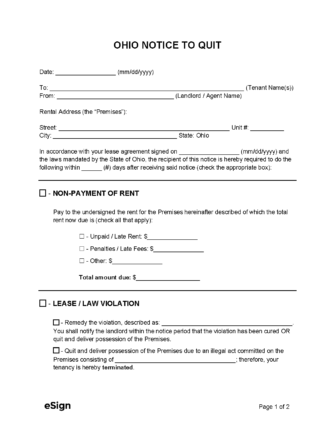

Ohio eviction notices are legal documents that landlords serve on tenants to start the eviction process. The notice informs the tenant that their lease will be terminated and orders them to move out or remedy their non-compliance. Notice periods vary depending on the reason for the termination of their lease. If the tenant is allowed to fix their non-compliance, they must do so within the notice period or face potential legal action. In the event that the tenant does not comply with a notice’s terms, the landlord will be within their rights to file an eviction lawsuit against them.
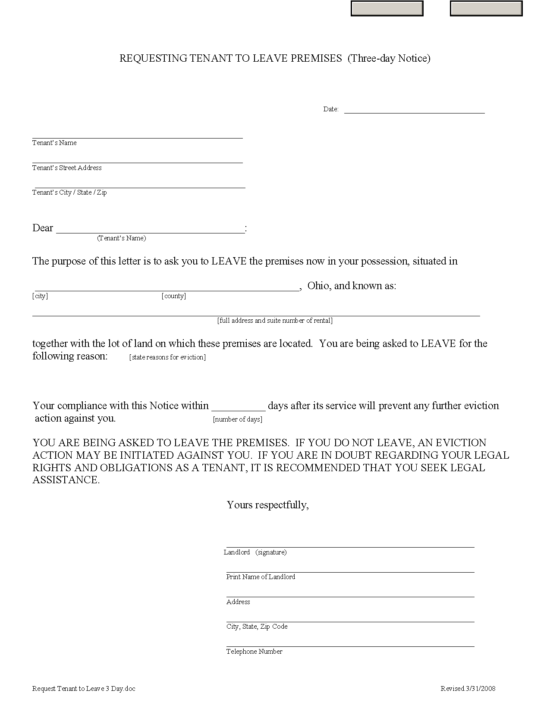
3-Day Notice to Quit for Non-Compliance/Non-Payment – Gives the tenant three (3) days’ notice to leave the premises for non-payment or other non-compliance with the lease.
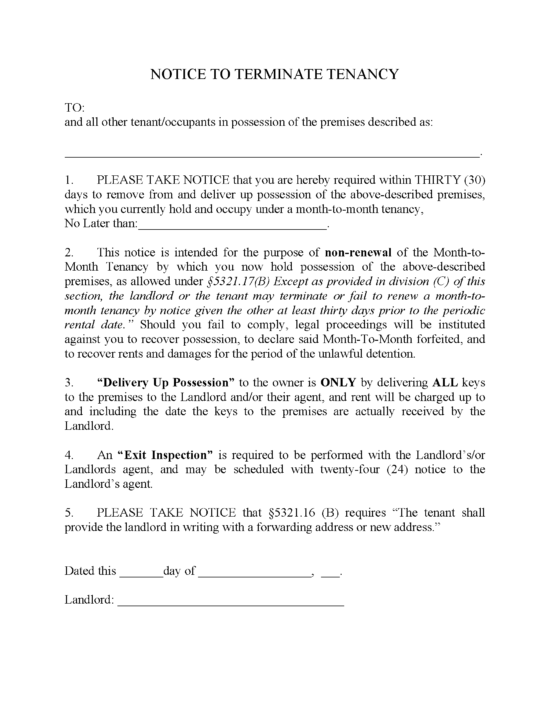
30-Day Notice to Terminate Month-to-Month Lease – Used by landlords to terminate month-to-month tenancies with thirty (30) days’ notice to the tenant.
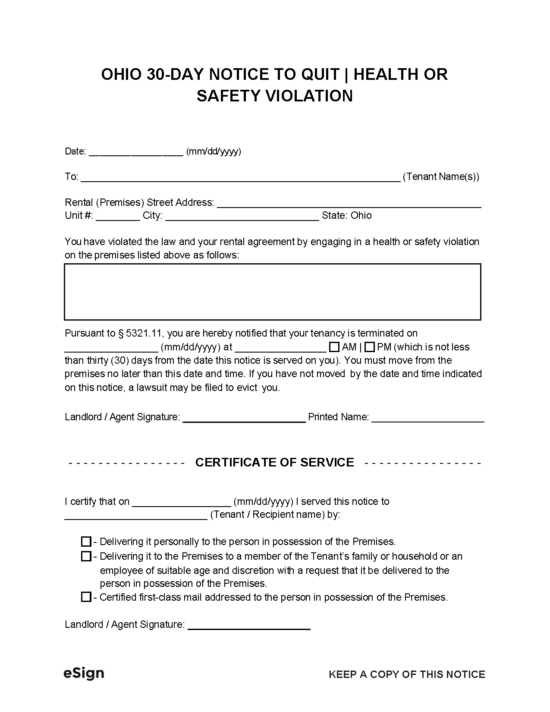
30-Day Notice to Quit for Health or Safety Violation – Informs the tenant that they have committed a health or safety violation and gives them thirty (30) days to cure the violation or move out.
If a tenant breaks the terms of their lease or doesn’t pay their rent on time in Ohio, the landlord is not required to allow them to remedy their violation or pay rent to maintain their lease. However, if the tenant’s non-compliance is a health or safety violation under statute § 5321.05(A), they must be given thirty (30) days’ notice with the opportunity to cure their violation. The landlord is required by state law (§ 1923.04(B)) to serve a notice to quit by certified mail (return receipt requested), in person, or by conspicuously posting it on the property.
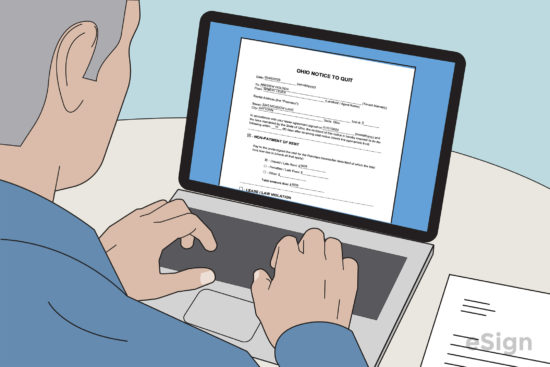
If a tenant has broken the terms of their lease or if the landlord wishes to terminate a monthly agreement, the tenant must be given a notice to quit that gives them a time frame to move out. In some cases, the landlord may allow the tenant to retain their lease by remedying their non-compliance or paying unpaid rent within the notice period. By downloading and filling out the forms below, landlords can give notice to their tenants in accordance with state laws.
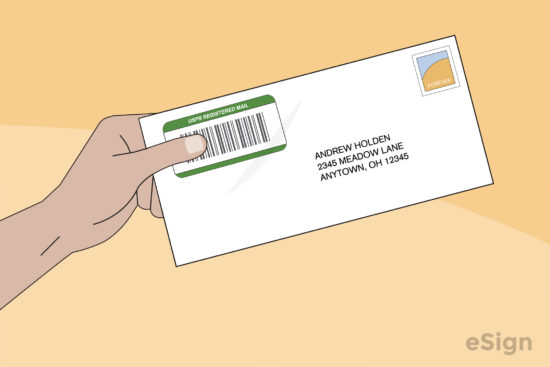
When serving the notice to quit on the tenant, the landlord will need to deliver it by certified mail, in person, or by posting it prominently on the rental unit (usually by affixing it to the front door). In the event that the tenant has not complied with the landlord’s terms or quit the premises when the notice expires, the landlord can start legal action against them.
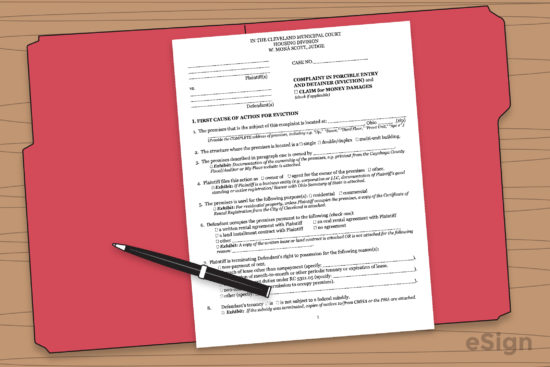
To begin an eviction lawsuit (called a “Forcible Entry and Detainer”) the landlord will need to file an Eviction Complaint (Example 1, Example 2) and Summons with the Clerk of the Municipal Court or Housing Court of the county or township (see court directory). Both of these forms can be obtained at the court’s office. The fees and process for filing a Complaint vary from one court to another. Therefore, the landlord should verify their court’s requirements before attempting to evict a tenant.
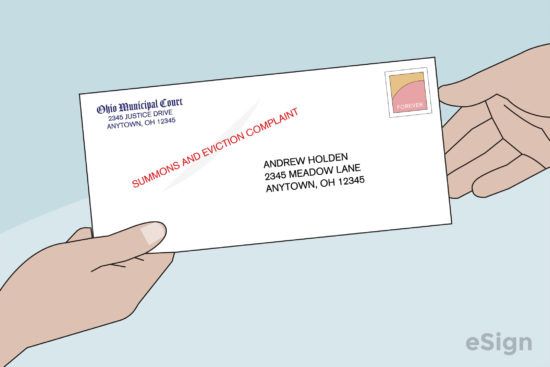
The Clerk of Court is required by law (§ 1923.06(C)) to serve the Summons and Eviction Complaint on the tenant by standard mail. The Summons informs the tenant of when the hearing will take place and explains how the tenant can file a response to the Complaint. The trial must be scheduled to take place at least seven (7) days from the date of service (thirty (30) days if the eviction is drug-related).
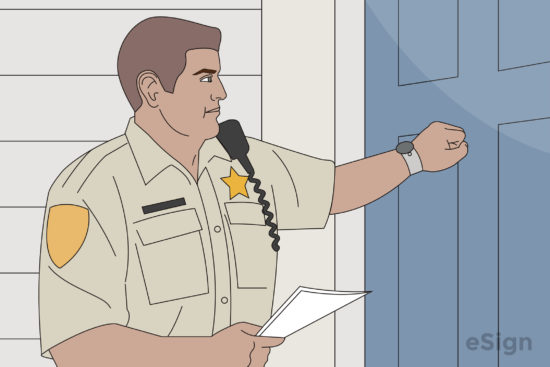
In addition to the Clerk sending the Complaint and Summons, the landlord must also serve these documents on the tenant. To accomplish this, they can pay a fee for the Clerk of Court to send them by certified mail. Alternatively, they can arrange for a sheriff, bailiff, or professional process server to deliver the documents. The server must file a Return of Process with the Clerk of Court within five (5) days from the date that the Summons was issued.
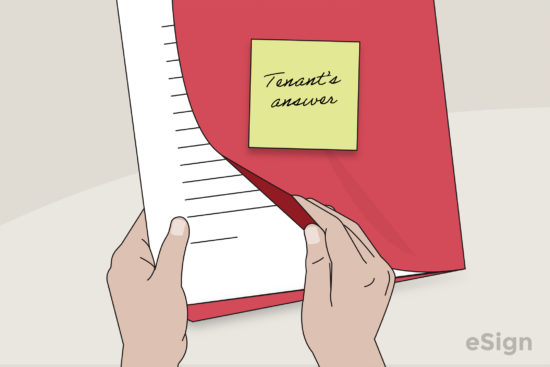
If the tenant wishes to defend themselves against the landlord’s lawsuit, they can file a written Answer (Example 1, Example 2) with the Clerk of Court. However, the tenant does not need to file an Answer to be able to represent themselves in court.
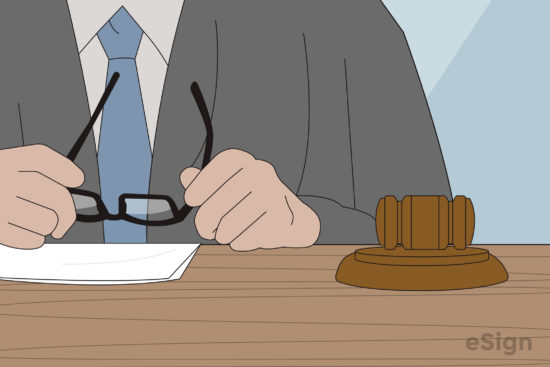
At the court hearing, there will be a Judge present to hear both parties present their cases. If the tenant doesn’t appear in court on-time, the hearing will not continue and the Judge will make a ruling (usually in favor of the landlord). After reaching a verdict, the Judge will make a ruling in favor of one party or another. The landlord regains possession of their property if they win the lawsuit, and the tenant is ordered to quit the premises. If the tenant prevails, the case will be dismissed and they will be able to continue their lease.
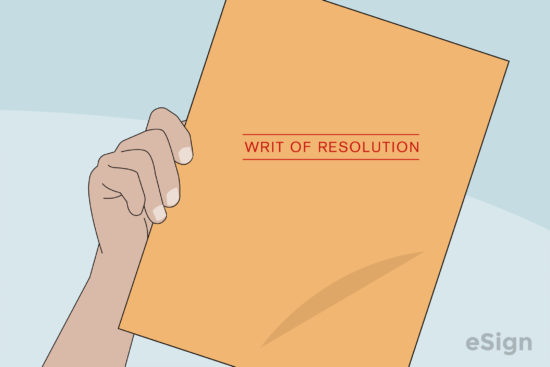
As soon a ruling is granted in the landlord’s favor, they will be able to request a Writ of Restitution that acts as the tenant’s final order to leave the property. Each county has different requirements for issuing and serving a Writ of Restitution. However, in most cases, the tenant will be given a period of time in which they can recover their possessions. Once the tenant has been properly served the Writ, they must quit the premises or face forcible removal by law enforcement.